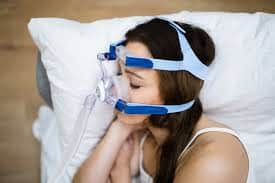
Continuous Positive Airway Pressure (CPAP) therapy is one of the most effective treatments for sleep apnea. Despite its benefits, many CPAP patients struggle with comfort and side effects, which can make it difficult to stick with therapy. Understanding why these issues occur—and how to address them—can help improve both sleep quality and overall health.
Common CPAP Comfort Issues Patients Face
Mask discomfort is a major reason CPAP patients struggle. Masks that are too tight can leave pressure marks, cause headaches, or irritate the skin around the nose, cheeks, or chin. On the other hand, a mask that’s too loose can leak air, leading to dryness in the mouth or nose, and reducing therapy effectiveness.
Some patients also experience anxiety or a sense of confinement while wearing the mask, particularly during the first few nights. Noise from the machine, though usually minimal, can also disrupt light sleepers.
How Mask Type Affects Comfort
The type of mask a patient uses plays a key role in comfort:
- Nasal pillows are small and lightweight, offering minimal contact but sometimes causing nasal soreness.
- Nasal masks cover the nose comfortably and suit most patients, though poor fit can cause leaks.
- Full-face masks are ideal for mouth breathers but can feel bulky or claustrophobic.
Choosing the right mask type and ensuring a proper fit is essential to prevent discomfort and side effects.
CPAP Side Effects That Can Disrupt Sleep
Side effects are another common reason CPAP patients struggle. The most frequently reported issues include:
- Dry Mouth and Nasal Congestion: Low humidity settings can cause dryness and irritation. Using a heated humidifier or adjusting humidity levels can help.
- Skin Irritation and Pressure Sores: Continuous contact with the mask can lead to redness, irritation, or small sores. Mask liners or soft cushions often reduce these problems.
- Aerophagia (Swallowing Air): Some users experience bloating or stomach discomfort due to swallowing air, which can be minimized by adjusting pressure settings or using the ramp feature.
Regularly cleaning and maintaining CPAP equipment also helps prevent irritation and other side effects.
Practical Tips for Better CPAP Comfort
Even minor adjustments can make CPAP therapy much more comfortable. Consider these tips:
- Ensure Proper Mask Fit: A mask should be snug but not tight. Over-tightening causes pressure marks, while a loose mask leads to leaks.
- Use Accessories: Mask liners, chin straps, or cushion pads can reduce irritation and improve seal.
- Adjust Machine Settings: Ramp features and humidifiers make therapy more tolerable for sensitive patients.
- Replace Worn Parts Regularly: Masks and cushions lose elasticity over time, affecting comfort and effectiveness.
Why Patients Struggle With CPAP Adherence
Many CPAP patients struggle simply because side effects and discomfort discourage consistent use. New users often need gradual adaptation to the mask and airflow. Consulting a sleep specialist for mask adjustments or pressure fine-tuning can also help improve adherence and sleep outcomes.
Conclusion
CPAP therapy is highly effective for treating sleep apnea, but comfort issues and side effects are common barriers. Mask fit, type, and machine settings are critical factors that influence CPAP adherence. By addressing these challenges proactively, CPAP patients can enjoy restorative sleep, improved energy, and better long-term health.
